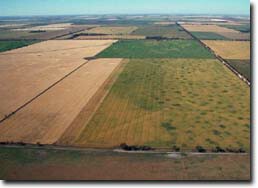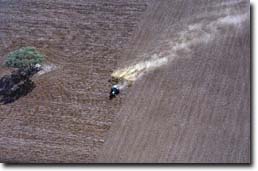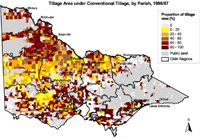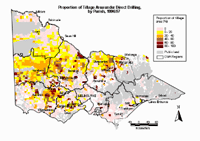Conservation Cropping
| Soil structure decline, soil erosion, loss of soil nutrients and soil salinity are major land degradation issues on cropland in Victoria. These conditions can be accelerated by certain cropping practices adopted by farmers. Intensive cultivation of soil before sowing, long periods of fallow between crops and total removal or burning of stubble can be major contributors to these forms of degradation. The use of tillage methods, stubble management practices and fallowing have been selected as indicators of the use of sustainable cropping practices. |
Trends in cropping practices
1980-1990 - A clear increase in use of minimum tillage and lesser increase in use of direct drilling. A reduction in stubble burning and a move towards stubble retaining or incorporation.
1990-1993 - Increased use of direct drilling (20% of farmers) and a reduction in use of fallow.
1993-1997 - Move back from direct drilling towards minimum tillage and an increase in use of fallow (22% of farmers). A move away from cultivation fallow towards more use of chemical fallow. Move back to stubble burning (28% of stubble).
Other findings
|  Land Use near Birchip (Photo: David Smith) |
Adoption rates for these sustainable cropping practices are documented for major cropping regions in Victoria, namely:
To view the information PDF requires the use of a PDF reader. This can be installed for free from the Adobe website (external link).
Return to Adoption of Best Management Practices main page.





